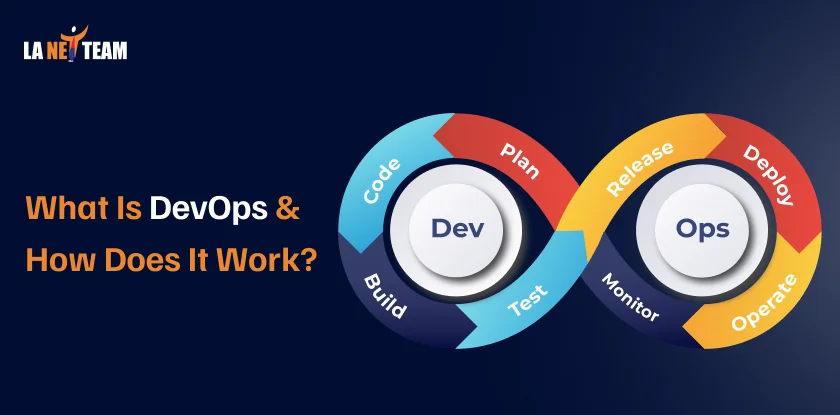Ever wondered how your favorite app that runs smoothly, gets regular updates, and hardly has any bugs?
Behind the scenes, developers built it, and operations teams keep it running.
But…. if these teams work separately, things slow down, bugs pile up, and updates take forever.
That’s where DevOps helps. DevOps is a software development methodology of building and running software where developers and the operations team collaborate closely.
What is DevOps in Simple words?
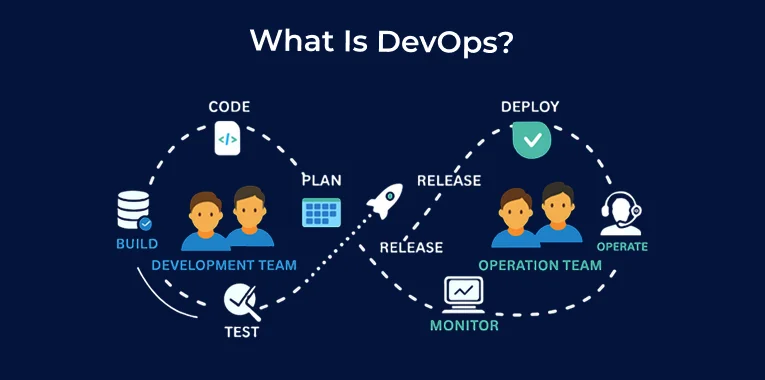
DevOps is an approach to building software where developers (Dev) and IT operations (Ops) work as one team instead of working separately.
By using modern tools like cloud and AI, it connects all parts of the process. Such as planning, coding, testing, and running the software.
With DevOps, work becomes smoother, teams can move faster, and keep improving the product without slowing down.
If you’re starting out, this ties into a guide to software development to understand where DevOps fits in your career path.
How does DevOps work?
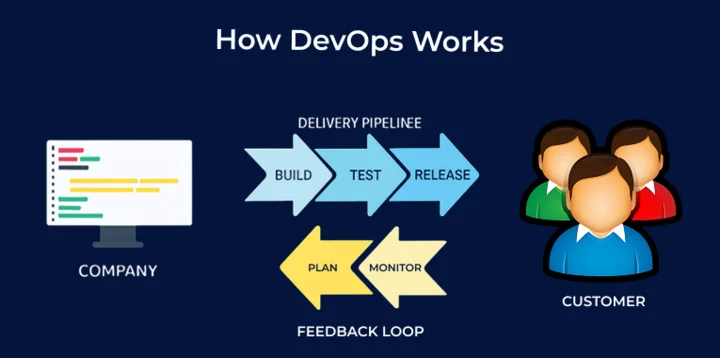
DevOps means developers and the operations team team up. Their goal is to build and deliver software faster and with fewer mistakes.
It works like a team project where no one is sitting in their own corner. Sometimes, both groups even become one single team. They handle everything, such as writing code, testing, releasing updates, and running the software.
To make the process smooth, DevOps uses tools that automate boring stuff and speed things up. These tools help in:
- Checking code automatically (continuous integration).
- Releasing updates quickly (continuous delivery).
- Teamwork and collaboration.
What is the DevOps lifecycle Stage?
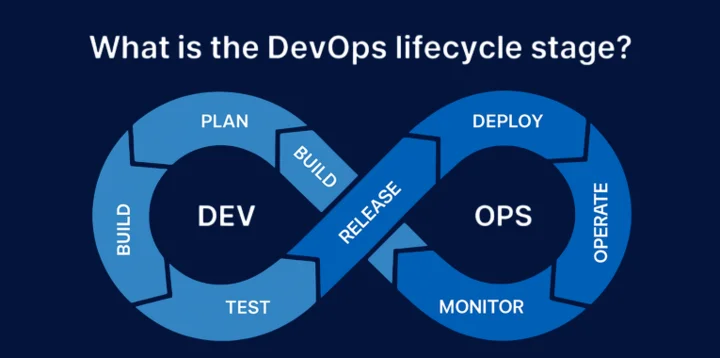
- Plan: This is where the project is planned. Teams get together and plan out what to build. They talk about goals, past work, and everyone shares ideas. This step happens over and over as new things are needed.
- Code: Developers write the code according to the plan. They make sure it fits the project’s goals and can work smoothly in operations.
- Build: This is when new code is added to the project. Tools like GitHub help keep track of all changes. The code is checked carefully before it becomes part of the project.
- Test: After the code is added, it’s tested to make sure it works. The team also looks for any hidden problems that might happen in rare cases.
👉Check out the blog on different software testing methodologies to ensure thorough checks.
- Release: When the code is tested, it is read to relocate to live. It is again inspected to ensure that it is ready to be used.
- Deploy: The last stage is the implementation of the code into the actual system to be used. Developers and operations collaborate and ensure that it operates prosperously.
- Operate: In this phase, teams watch how the software works while people use it. This helps spot any problems and keeps everything running well.
- Monitor: Lastly, feedback and data are collected to see hw things perform and learn what to fix or improve. By using this information, teams update and make plans for the next time.
Benefits of DevOps
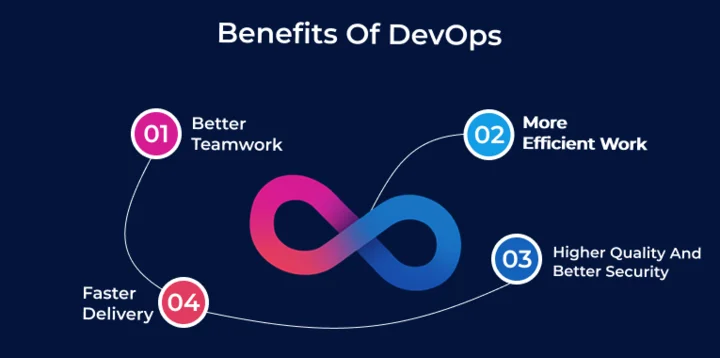
- Better teamwork: As the core of devOps involves working together and sharing information. So, good teamwork is essential. It leads to fewer misunderstandings and quicker decisions.
- More efficient work: By using automation, DevOps eliminates the boring manual tasks. This lets teams perform more in less time and release software more predictably.
- Higher quality and better security: As DevOps involves frequent testing and code reviews, it helps catch problems early. Security is also a part of the process, allowing issues to be identified before users even encounter them.
- Faster delivery: Teams quickly release new features and fixes. This helps customers get what they need sooner. Companies can also respond faster to market changes.
Teams adopting DevOps often earn competitive pay, see software engineers salary trends for DevOps specialists.
How to adopt a DevOps model?
If you want to start using DevOps, here’s how it works in simple words:
Step 1 – Assess current workflow:
The First step is about taking a look at how your team is performing right now. Analyze what is slowing down or causing mistakes.
Step 2 – Set clear DevOps goals:
Next, decide what you want from DevOps. Whether you want to release updates faster, want fewer errors, or better team collaboration. As clear goals keep your team focused on the right direction.
Step 3 – Make the team work together
Don’t let people work alone in their own boxes. Put developers, ops, QA and security on the same team. They should talk, share quick updates, and solve problems together. When everyone helps, things break less and get fixed faster.
Step 4 – Let machines do the boring work
Use simple tools so the computer handles repeat jobs. Tools like Jenkins (runs tasks), Docker (packs apps), and Ansible (sets up servers) do the dull stuff. That way people spend time on smart work, not on copy-paste chores.
Step 5 – Automatic checks and releases (CI/CD)
Make a system that checks code automatically whenever someone changes it. If the check and tests pass, the change can go live without a person doing it by hand. This makes releases faster and cuts mistakes.
Step 6 – Monitor and Optimize continuously:
Lastly, always keep monitoring things. You can also use tools like Prometheus or Grafana to see if your system is healthy or not. If you feel someone is off, fix it quickly and keep improving your process step by step.
Core Practice of DevOps
- Continuous Integration & Continuous Delivery (CI/CD): Test and code changes automatically. After being tested, the code is automatically delivered to staging or production. This renders releases regular, secure, and less hazardous.
- Automation: Repetitive tasks such as testing, deploying, and monitoring should all be done through the use of tools. This makes the process quicker, gets rid of errors, and ensures teams can work on worthy projects. The process is done both through automation and security checks.
- Cross-Team Collaboration: Incompatible teams (programmers, operations personnel, and others) do not act either as individual forces or as isolated components. By sharing the goals and responsibilities, communication has been enhanced and issues are easily rectified.
- Version Control: Keep track of every change made to code and infrastructure. This helps the team know who changed what and makes problem-solving easier.
- Situational Awareness: Monitor the system actively to quickly spot and solve problems before they grow.
- Infrastructure as Code (IaC): Manage servers and cloud resources with code. This makes setups consistent, repeatable, and easy to scale.
- Microservices: Build software as small, independent services that work together through APIs. This allows teams to innovate and scale faster.
- DevSecOps: Add security at every step. Use automated tools and regular compliance checks to keep software safe.
- Configuration Management: Automatically set up and maintain systems to keep them consistent across different environments.
- Continuous Monitoring: Keep an eye on application performance and user experience in real time to quickly fix issues and improve software.
- AI in DevOps: Make the teams smarter and faster using AI and machine learning to assist with planning, coding, analyzing, and automating the DevOps process.
👉For detailed information, check out this DevOps practice blog.
Unfiltered Difference Between: DevOps Vs waterfall
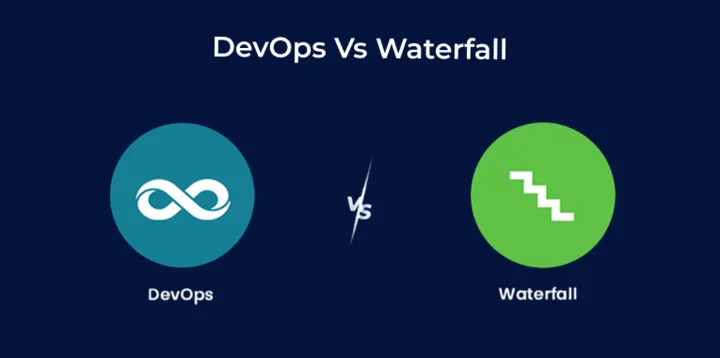
| Factor | DevOps | Waterfall |
|---|---|---|
| Process | Continuous development & deployment | Step-by-step, rigid process |
| Collaboration | Developers, operations, and QA work together. | Teams work separately |
| Speed | Fast, frequent releases | Slow, long release cycles |
| Automation | High (CI/CD, automated testing) | Mostly manual processes |
| Flexibility | Easily adapts to changes | Hard to change once planned |
| Risk Handling | Continuous monitoring, early issue detection. | Issues found late in the cycle |
Why DevOps Wins?
Waterfall is rigid and slow as it includes a rigid sequence of steps. Agile software development life cycle principles integrated with DevOps make development fast, iterative, and reliable.
DevOps facilitates continuous integration, testing, and delivery. This saves time wastage and it also catches the trouble before the malfunction takes place, therefore, software delivery is quicker and safer.
This comparison highlights why many teams prefer DevOps for modern software development.
Closure
DevOps pertains to collaboration in order to create or deliver software more quickly and well-crafted. Begin with an investigation of what you already have, looking for delays and repetitive tasks.
Then implement the alternations which are tiny: automate wherever possible, take new responsibilities, and receive the feedback very soon. The slightest improvements may increase speed, quality, and customer satisfaction.
Frequently Asked Questions
These tools help automate development workflows, manage infrastructure, and ensure that code is tested, deployed, and monitored continuously.
While having skilled DevOps engineers can help, the key to success lies in changing the mindset of your team and fostering a culture of collaboration and continuous improvement.
This ensures that security is considered early in development, and vulnerabilities are detected and addressed more quickly, reducing the risk of security breaches.
Initially, it may take a few months to set up the tools and processes, but once it’s running, you’ll notice faster releases, fewer bugs, and improved software quality.
However, many resources are available online, including courses, tutorials, and certifications, so your team can gradually pick them up.
